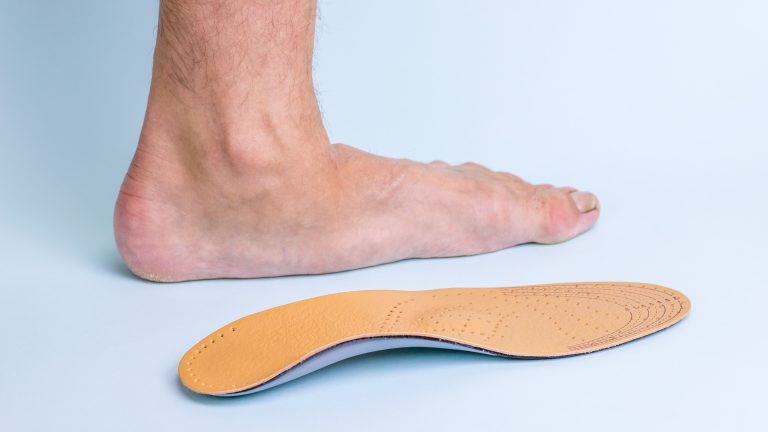Custom-made and manufactured with the most high-quality materials, 3D-printed foot orthoses offer an unprecedented remedy for a variety of foot issues. In this article, we will talk about flatfoot, as well as the symptoms and treatment options available via custom orthoses.
What exactly is flatfoot?
Flatfoot is a biomechanical condition characterized by a collapse of the arch of the foot, resulting in the decline of the inner arch and outward torsion of the foot.
Symptoms
Walking with flatfoot can cause pain in the ankle joints and plantar region that can then travel to the knees and lower back. Flat feet affect posture negatively and may lead to imbalances on some surfaces. Additionally, it may cause lameness, heel pronation, or an outward gait.
In the long run, flatfoot can result in a variety of other conditions, including hallux valgus, plantar fasciitis, and metatarsalgia.
Causes
The causes vary depending on the person and age. Flatfoot is frequently congenital in children. It might be brought on by a genetic predisposition, a muscular and ligamentous deficiency, or both. Adults may experience this condition for a variety of reasons, including pronation of the ankles, unequal lower limb lengths, excess weight, inflammatory or degenerative diseases, dysfunction of the leg muscles, aging, or participation in specific sports. Trauma can result in flatfoot as well, via tear or fracture.
Flatfoot treatment options
Wearing orthoses or orthopedic footwear is the primary method of relieving flatfoot. This kind of device will give the foot’s arch the support it needs and distribute the body’s weight more evenly, offering a daily correction that is effective and alleviates the symptoms.
Treatment for flat feet can also include strengthening exercises and keeping an eye on the patient’s weight.
Flatfoot treatment using 3D printed foot orthoses
Flatfoot is effectively treated and alleviated with 3D-printed foot orthoses. These models, which differ from traditional insoles, are the result of cutting-edge technology that meticulously reproduces the foot to create an orthosis that is completely custom-made, in part because of an impression made with a three-dimensional sensor. This kind of orthoses profits from an intricate manufacturing process that combines high-end materials with cutting-edge technology. They intervene on the flatfoot with precision to effectively relieve it and correct it because they are entirely adapted to the patient’s morphology.
Differences between flatfoot and false flatfoot
It is crucial to confirm that the patient has flat feet before prescribing foot orthoses. A misdiagnosis is often the cause of treatment failure.
Flatfoot is frequently confused with “false flatfoot,” a less common but exceedingly problematic condition. It also exhibits collapse of the foot arch, but this time the forefoot turns outward, and the ankle deviates inward. While the flatfoot has a collapsed arch even when sitting, the false flatfoot’s deviation is primarily visible when a person is standing. Leg, ankle, knee, hip, and lower back pain are the main symptoms of false flatfoot. Standing for long periods of time also causes fatigue and balance issues with false flatfoot.
Those are two different conditions that call for different treatments and the right foot orthoses, despite the fact that they may look the same at first glance.
Get an accurate flatfoot diagnosis for the prescription of proper orthoses
Verifying that the patient has flatfoot and not another condition that might resemble it is the first thing to do. If this is the case, prescribing 3D-printed orthoses will aid in treating this uncomfortable and sometimes even painful condition. Are 3D-printed orthoses something that has piqued your interest? Get in touch with your local Talaria retailer for further details.
